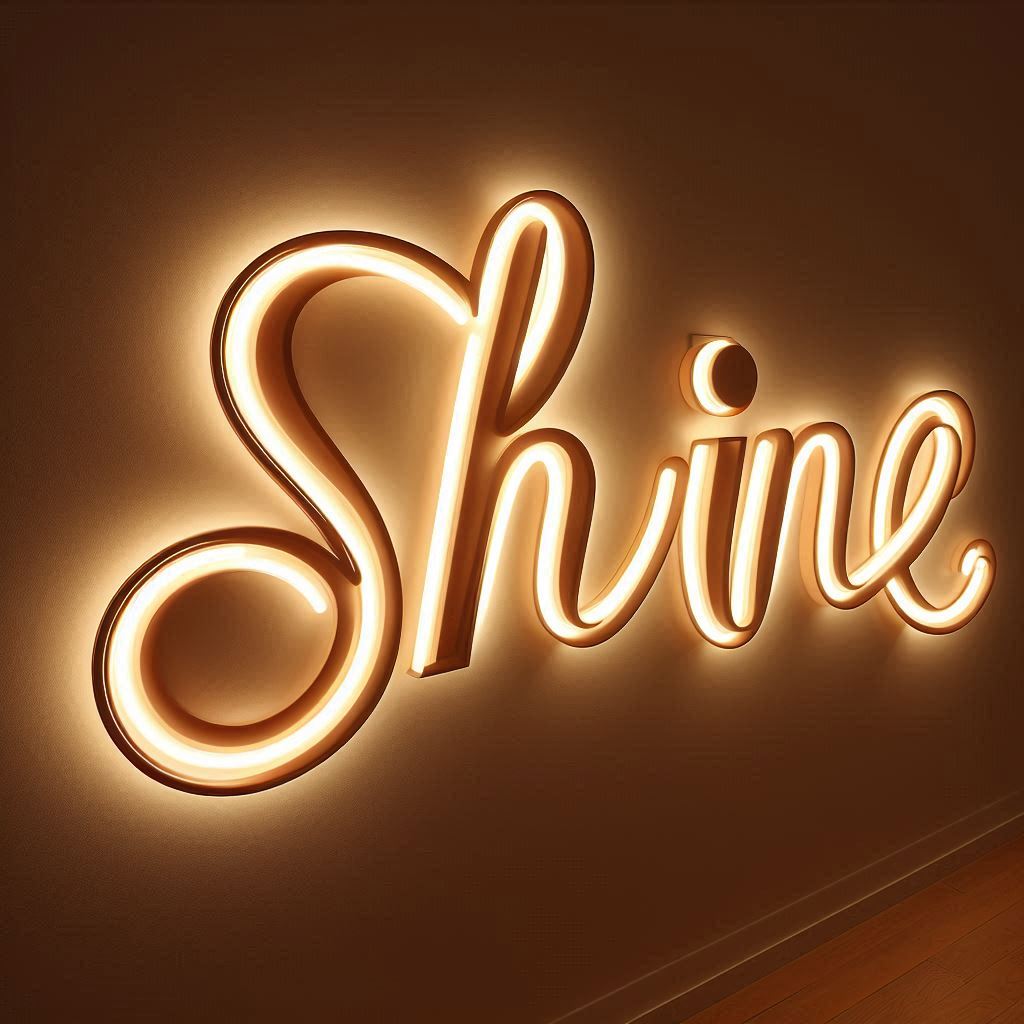Wall lights serve a dual purpose: they are functional and decorative. While their primary role is to illuminate a space, the quality and nature of the light they produce can significantly impact the atmosphere and design of a room. A key aspect of this is the shine of the wall light—the glow or radiance that it casts onto surrounding surfaces. Let’s delve into what makes wall light shine so important and how it enhances both the aesthetics and functionality of a space.
Understanding the Nature of Wall Light Shine
The shine produced by wall lights is more than just the result of turning on a bulb. It’s the combination of factors like light intensity, color temperature, diffusion, and the angle at which the light is emitted. Each of these elements can create different effects that can change the mood and visual appeal of the room. A soft, diffused shine can evoke calmness, while a focused, bright light can add drama or spotlight key features.
Types of Wall Light Shine
1. Direct Shine: This type of lighting creates focused beams that highlight specific areas of a room. Think of a spotlight effect or task lighting, often used in reading corners or workspaces. The shine from direct lighting can create sharp contrasts and bold shadows, adding depth and dimension to the room’s design. When used effectively, direct shine can emphasize architectural elements, art, or textures on the wall.
2. Ambient Shine: Ambient shine is softer and more diffused, filling the room with gentle, uniform light. This is ideal for creating a relaxing environment, as it reduces harsh shadows and glare. Ambient lighting often uses shades or frosted glass to diffuse the light and can be achieved through modern wall lights designed to bathe the room in a glow that mimics natural light.
3. Reflective Shine: Reflective shine involves the light bouncing off walls or ceilings to create a broader and more subtle illumination. This can add warmth and a sense of spaciousness to a room. Reflective lighting works particularly well in rooms with light-colored walls or metallic surfaces that can enhance the spread of the light.
Choosing the Right Shine for Your Space
The effect of wall light shine depends largely on the space it is illuminating. Here are some tips to choose the right type of shine for different areas:
1. Living Rooms: Use a combination of ambient and reflective shine to create a welcoming atmosphere. Wall lights with upward-facing fixtures can cast light toward the ceiling, producing a soft, reflective shine that bounces throughout the room.
2. Bedrooms: Opt for wall lights with a gentle, warm shine. A frosted shade or dimmable feature allows you to control the intensity of the light, creating a restful environment ideal for winding down.
3. Hallways and Staircases: Direct or reflective shine is often used in these spaces. Wall lights with a directional shine can enhance architectural features, while reflective lighting helps brighten narrow or enclosed spaces without overpowering the design.
4. Bathrooms: Bright, clear shine is often needed here for tasks like grooming or applying makeup. Choose wall lights that emit direct, focused shine without casting harsh shadows on the face. For a more relaxing vibe, such as near a bathtub, ambient lighting can also work well.
The Role of Light Fixtures in Controlling Shine
The fixture of the wall light plays a pivotal role in how the shine is cast. For instance, lights with opaque shades will focus the shine in a particular direction, while those with translucent or frosted glass will create a more dispersed, softer glow. Similarly, the shape of the fixture—whether it’s a sconce, flush mount, or an adjustable arm—can affect the shine’s reach and intensity.
1. Sconces with Reflective Surfaces: These can amplify the shine, making a small fixture appear to emit more light.
2. Lensed Fixtures: These allow for a more controlled and directed shine, often ideal for task lighting.
3. Decorative Fixtures: More than just functional, decorative fixtures can manipulate the shine to add artistic flair, creating light patterns on the walls or diffusing the light in unique ways.
Creating a Balance Between Shine and Shadow
An often-overlooked aspect of lighting design is the interplay between shine and shadow. The right balance between the two can add texture and interest to a room. For instance, a wall light that shines upward might leave a part of the lower wall in shadow, creating a subtle gradient of light that adds a layer of sophistication to the room’s ambiance.
In spaces with multiple light sources, combining wall light shine with overhead or floor lighting can further enhance this balance, providing both functional illumination and mood-enhancing accents.
Conclusion
Wall light shine has the power to transform the atmosphere of a room. Whether you’re seeking a soft, ambient glow or a bold, direct spotlight effect, understanding the nuances of shine helps you craft the perfect lighting setup. From selecting the right fixture to balancing brightness and shadow, every choice contributes to creating a space that feels as good as it looks. Ultimately, wall lights aren’t just about illumination—they are a vital tool in shaping the mood and character of your home.

